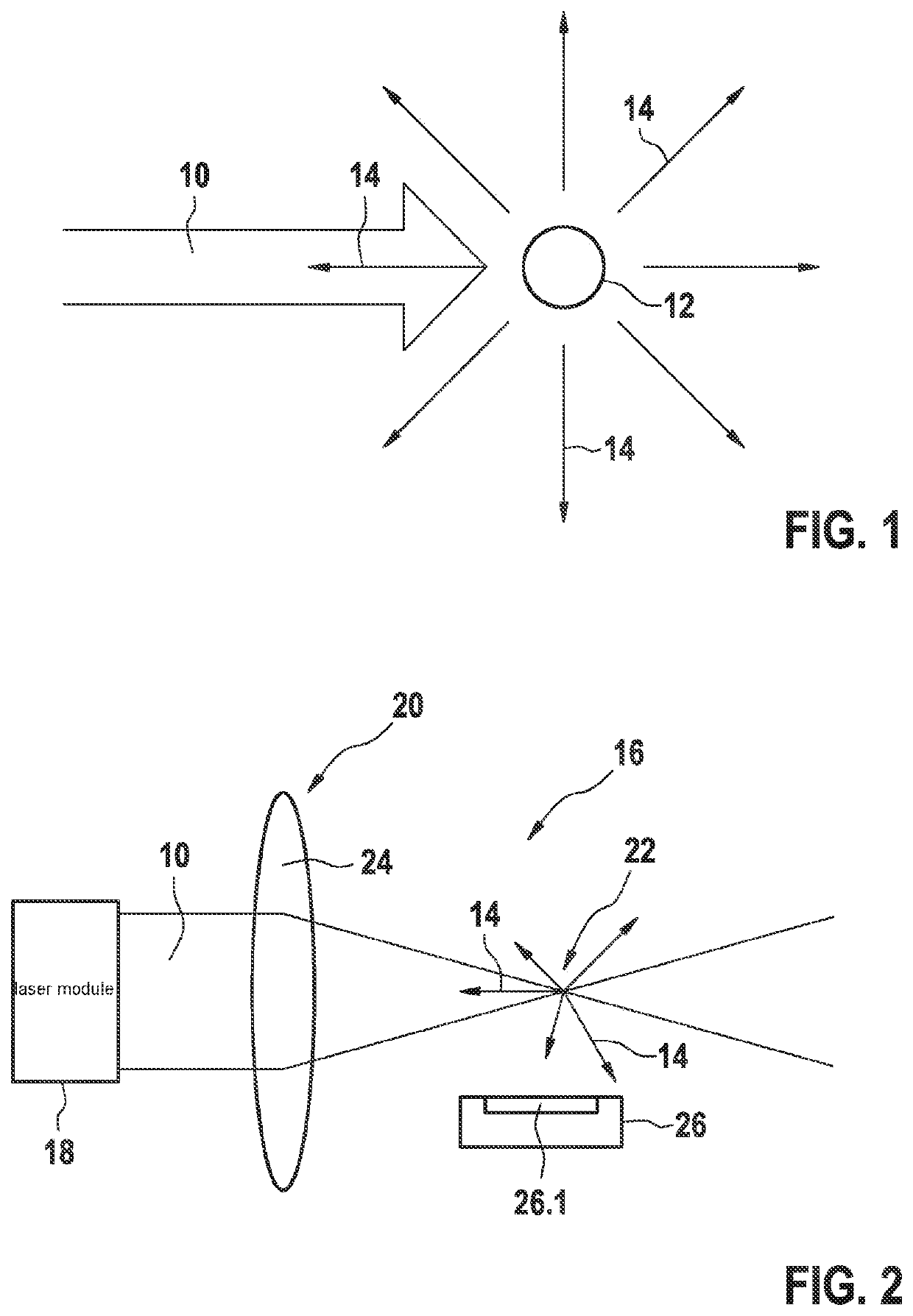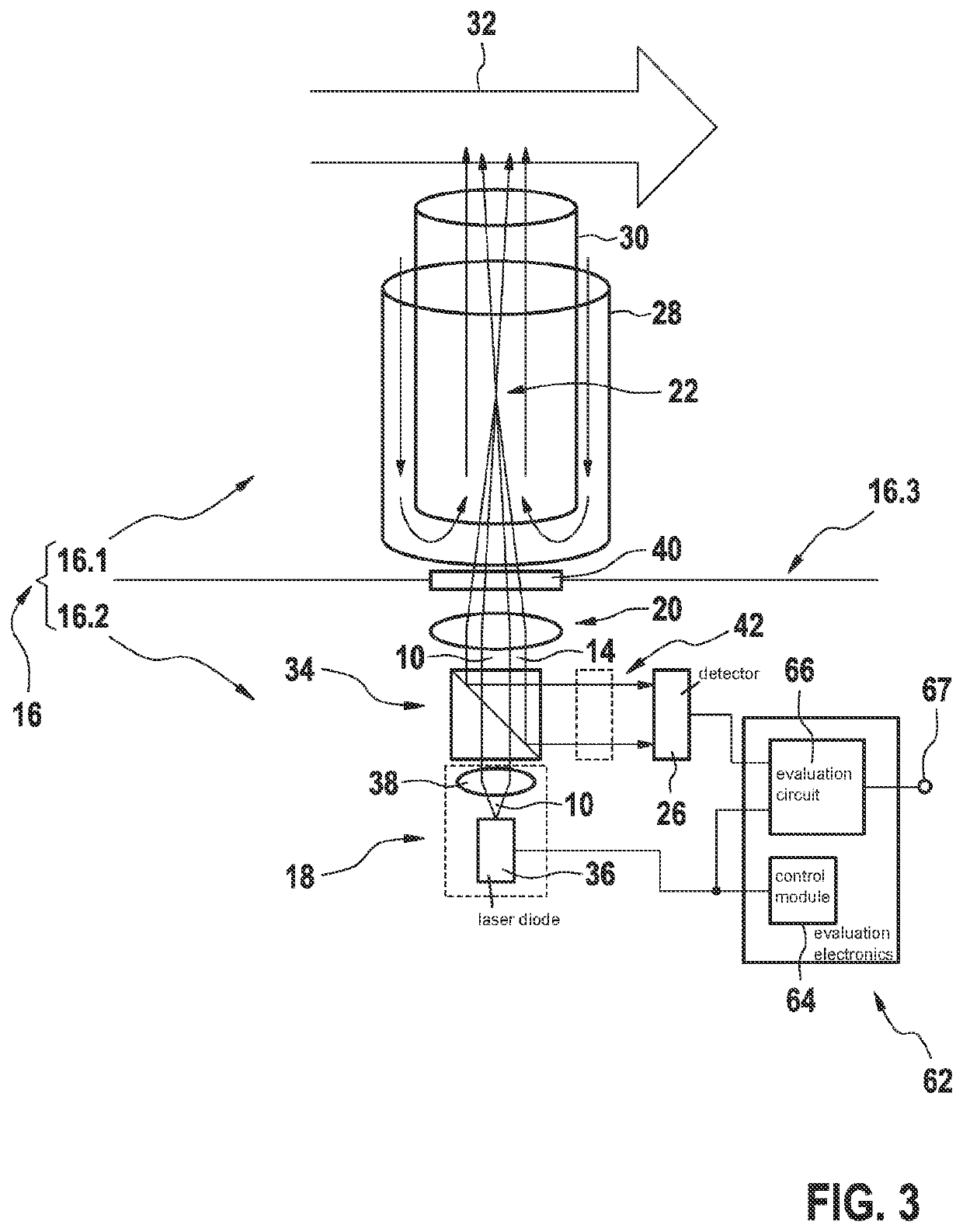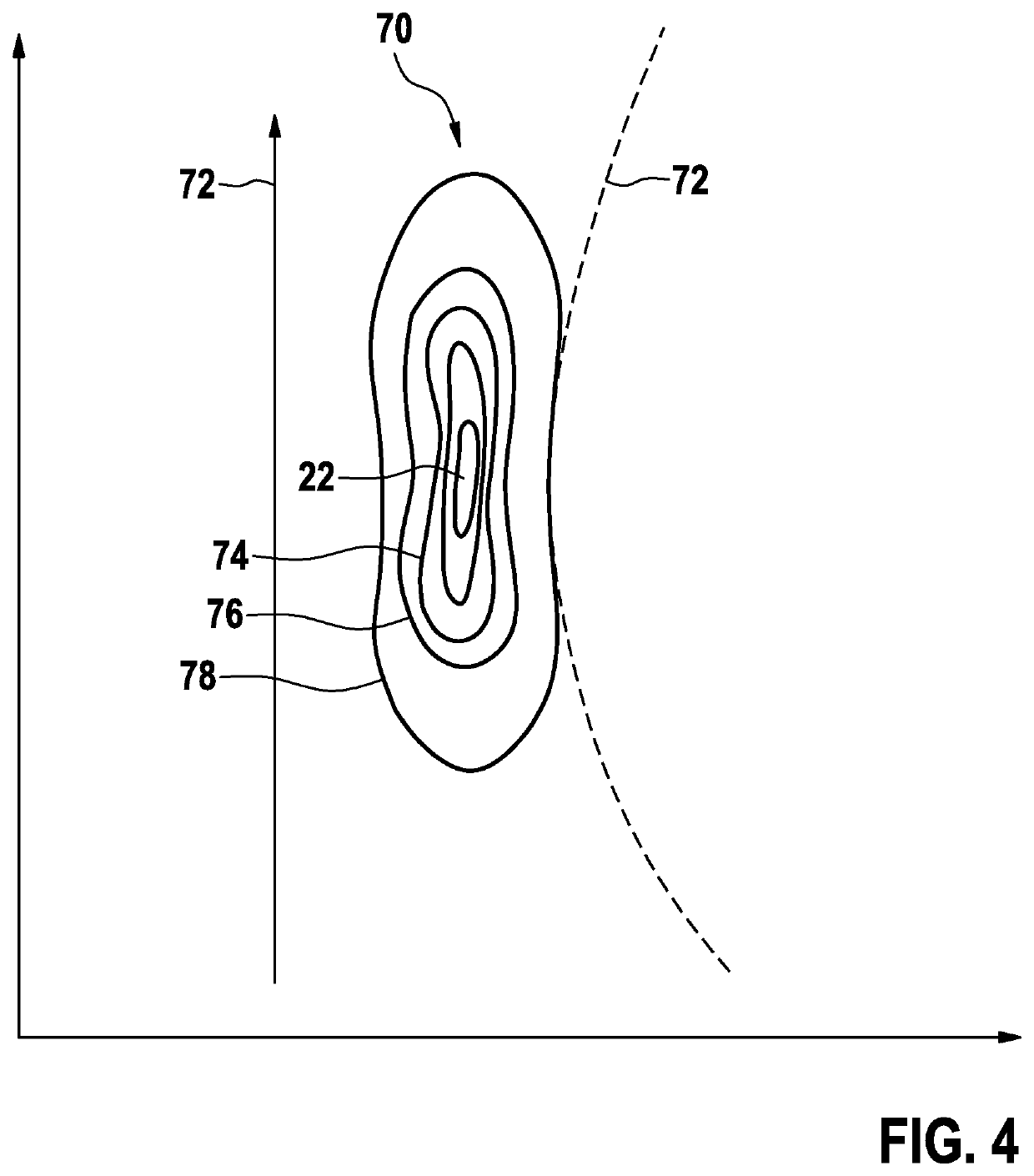Method for operating a particle sensor
- Summary
- Abstract
- Description
- Claims
- Application Information
AI Technical Summary
Benefits of technology
Problems solved by technology
Method used
Image
Examples
Embodiment Construction
[0038]FIG. 1 illustrates the measuring principle based on laser-induced incandescence (LII). Laser light 10 of high intensity strikes a soot particle 12. The intensity of laser light 10 is so high, that the energy of laser light 10 absorbed by soot particle 12 heats soot particle 12 to several thousand degrees Celsius. As a result of the heating, soot particle 12 emits significant radiation 14 spontaneously and substantially without a preferential direction, in the form of thermal radiation also referred to below as LII light. Therefore, a part of the radiation 14 emitted in the form of thermal radiation is also emitted in a direction opposite to the direction of incident laser light 10.
[0039]FIG. 2 schematically shows a basic layout of an exemplary embodiment of a soot particle sensor 16 according to the present invention. Here, soot particle sensor 16 includes a CW (continuous wave) laser module 18, whose preferably parallel laser light 10 is focused onto a very small spot 22 by a...
PUM
 Login to View More
Login to View More Abstract
Description
Claims
Application Information
 Login to View More
Login to View More - R&D
- Intellectual Property
- Life Sciences
- Materials
- Tech Scout
- Unparalleled Data Quality
- Higher Quality Content
- 60% Fewer Hallucinations
Browse by: Latest US Patents, China's latest patents, Technical Efficacy Thesaurus, Application Domain, Technology Topic, Popular Technical Reports.
© 2025 PatSnap. All rights reserved.Legal|Privacy policy|Modern Slavery Act Transparency Statement|Sitemap|About US| Contact US: help@patsnap.com



